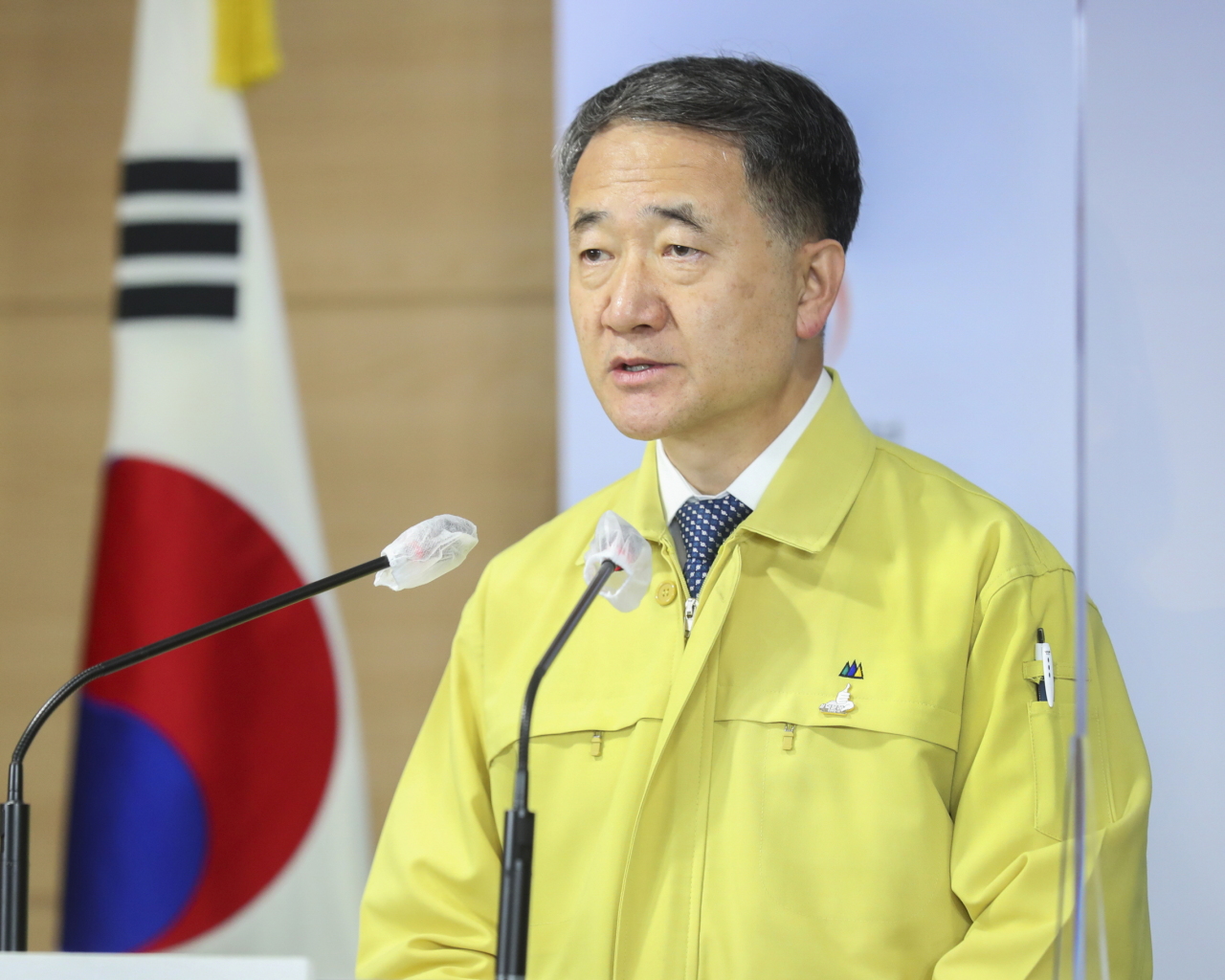S. Korea moves on to least restrictive physical distancing tier from Monday
Drop in testing over long weekend puts Sunday’s case tally at 58
By Kim ArinPublished : Oct. 11, 2020 - 09:59

South Korea will move on to the least restrictive tier of its physical distancing system starting Monday, Prime Minister Chung Sye-kyun said Sunday, the final day of the holiday weekend. The relaxation in measures comes without yet meeting the necessary benchmarks.
“People are exhausted from keeping the social distancing orders for a prolonged period. The negative effects on the economy have been taken into consideration as well,” Chung said, explaining the decision.
Minister of Health and Welfare Park Neung-hoo said during a press briefing held the same day that while the coronavirus situation in the country is not yet eligible for reduced social distancing, an exception has been made to “ensure sustainability in the long-term.”
Under the softened guidance, risky businesses such as nightclubs, bars and buffet-style restaurants can resume operations. Sports stadiums will welcome back spectators. Churches will be able to hold in-person services. Indoor gatherings of 50 people or more are advised against, but permitted.
Korea conducted 5,799 tests on Saturday to find 58 more positive cases of novel coronavirus -- 46 locally transmitted and 12 imported from overseas -- according to the Korea Disease Control and Prevention Agency on Sunday. The cumulative number of reported cases now totals 24,606.
Korea has been practicing a modified version of the second-most stringent tier in the physical distancing framework since the Chuseok holiday that began Sept. 30. The government in June set out the tiered system for determining the intensity and timing of physical distancing restrictions based on criteria such as case growth.
But health experts warn metrics other than the number of confirmed patients are not too promising. The testing positivity rate reached a record high of 1.62 percent on Friday, while the number of tests carried out fell to 4,451, down 6,938 from the previous day’s 11,389. The point of infection is unknown for around 20 percent of the recently discovered cases.
“Fewer tests take place over weekends and holidays, leading to fewer patients being diagnosed,” said infectious disease specialist Dr. Kim Woo-joo of Korea University Medical Center in Guro, southern Seoul, calling for “a ramp-up in testing for the traditional seasons of colds and flu.”
“In fall and winter, one of the main issues will be telling apart seasonal allergies, cold and flu from COVID-19 -- whose symptoms are indistinguishable,” he said. “Because COVID-19 manifests in a wide range of symptoms, you need to be tested to know for sure.”
Pulmonologist Dr. Chun Eun-mi of western Seoul’s Ewha University Medical Center said lifting the controls before assessing the impact of the two subsequent holidays might be “hasty.” “Korea already enjoys some degree of normal. I think we should be taking a slow, careful approach before allowing businesses to open at once,” she said.
While the country moves away from intensive physical distancing, the mask mandate which came into effect in August is set to be expanded. Starting Tuesday, face masks need to be worn in all public spaces, indoors or outdoors. From Nov. 13 and on, those failing to do so will face a fine of up to 100,000 won ($86.77).
Two more people died on Saturday, putting the number of coronavirus fatalities at 432. The overall death rate stands at 1.63 percent. The rate is higher for elderly patients, killing nearly 1 in 5 of those 80 years or older.
There are 89 seriously ill patients who are currently in intensive care units at hospitals. The majority -- close to 90 percent -- of them are 60 or older.
The number of recoveries reached 22,693, up 69 from a day prior. Since late June, the bar for discharging patients has been lowered to improve bed turnover at hospitals. Patients who remain without symptoms for 10 consecutive days after their diagnosis are considered officially recovered and released from medical care.
By Kim Arin (arin@heraldcorp.com)

















![[KH Explains] Hyundai's full hybrid edge to pay off amid slow transition to pure EVs](http://res.heraldm.com/phpwas/restmb_idxmake.php?idx=652&simg=/content/image/2024/04/18/20240418050645_0.jpg&u=20240418181020)

![[Today’s K-pop] Zico drops snippet of collaboration with Jennie](http://res.heraldm.com/phpwas/restmb_idxmake.php?idx=642&simg=/content/image/2024/04/18/20240418050702_0.jpg&u=)